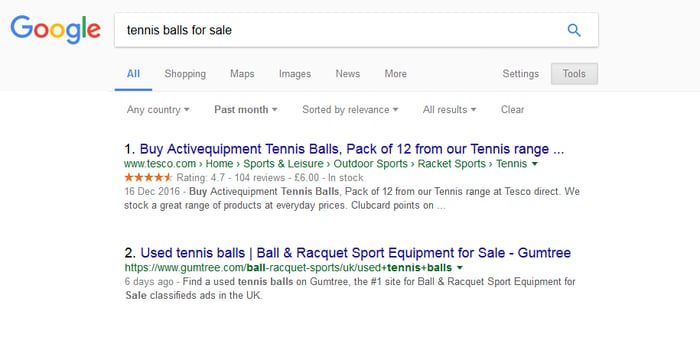
Although the fundamental values of SEO have remained unchanged for the last 10 years, high-quality content and sustainable link building strategy may no longer be enough in 2017. Especially in extremely competitive niches. Let’s look at three trends that have a potential of changing the way we think about SEO in 2017.
Balance between Too Long; Didn't Read (TL;DR) and thin content
There seem to be two camps of blogging gurus – one advocating the need to create long-form content and the other saying that textual content should be presented in small chunks to make sure people have time to read it.
The truth is probably somewhere in the middle because if you observe really successful blogs, you realise that they have a good mix of different types of content: long-form pillar articles, short news pieces or announcements, videos, infographics and many others.
Blogs that concentrate on short articles are often in danger of roaming into the dark territory of thin content and Panda flashbacks.
Perhaps we need a new term in our SEO books – dense content. This term has been floating around cyberspace since 2012 but SEOs have only recently started to think about what it really means.
According to IBM, we are creating 2.5 billion gigabytes of data every day! 90% of all data in the world has been created in the last two years. And this trend is showing no signs of subsiding.
There will be more and more data, and people will have less and less time to consume it. So, how do we get people to read more in a shorter timespan? The answer is dense content – that provides maximum information in the minimum of space.
In most cases delivering dense content would boil down to:
- Condensing longer-form content by getting rid of lyrical departures, literary devices and all other things that make the blog post sound as if it was written by a human (you can sense some irony here, I’m sure)
- Providing an alternative medium for content consumption. Look at MOZ’s whiteboard Friday. If you’ve got too much time on your hands, you can read the transcript, however, you can also save the video for later and listen to it while you’re commuting saving yourself valuable time. Just make sure you don't watch it while you're driving!
- Providing a detailed summary at the beginning or the end of the article. Many bloggers are already doing this, as it's widely becoming common practice, it's a great idea to include in your longer form posts.
- Using HTML5 to deliver interactive infographics that are readable by bots. Of course, infographics are great a great medium for dense content because you can fit in all the data that matters within a limited space but, alas, Google can’t read a PNG file. It can read an HTML5 document, though, so it’s a win-win situation. Another option is to provide a version of the infographic as a PDF document that Google can read, as long as the text in it is stored as text rather than as a graphic.
Page speed optimisation and Accelerated Mobile Pages (AMP)
Page speed is officially a ranking factor, so why ignore it? Mostly due to the time constraints we discussed earlier, people don’t have time to wait for your slow site to load up. It is estimated that 53% of visitors will abandon your site if it takes longer than 3 seconds to load. The remaining 47% are also likely to encounter bad user experience so the chances they would convert are pretty slim.
Here at LexisClick we constantly perform technical SEO audit on various random sites and in most cases the sites fall in the “slow” bracket with page speed ratings of between 35/100 to 60/100. Everyone should be able to hit at least 80/100. What is your speed score? Click here to get your score in 45 seconds...
Although the biggest culprit for this sluggish trend is server choice (you can’t expect building a successful business website on a £20-per-year shared hosting package) there is also a question of outdated web technology and cramming in too many unnecessary background processes.
For example, if your Wordpress site installation has more than 10 plugins, we can almost guarantee that one or more of them will be slowing your site down while not really enhancing its features.
From our experience, dealing with page speed optimisation comes down to making a number of small changes with the aim of bumping the score up point by point; but there’s a new trend on the horizon and it might be a big one. It’s called Accelerated Mobile Pages or AMP. We hope this incentive doesn’t end up as badly as the whole Google Authorship operation.
AMP is an open source incentive lead by Google and aimed at getting publishers to create super-optimised content for mobile users. The pages load almost instantly even if their design does leave something to be desired!
Since the Google Bot is now crawling the web posing as a mobile device and the “mobile-first” web design is all the rage, we can’t afford to ignore AMP. Even if it doesn’t end up being an SEO ranking factor, delivering instant mobile content will lead to a better user experience and a better conversion rate.
If you want to start playing with AMP and your website is based on Wordpress, you can try the project’s official plugin, or even this unofficial one.
Structured data
Structured data is hidden data contained in your page code that is invisible to a regular human visitor. It contains additional information aimed at search engines helping them make more sense of your content.
Google is already using structured data in its SERPs. They’re especially helpful for ecommerce queries. A regular web user wouldn’t have the slightest idea as to what structured data is, however, thanks to the Google SERP formatting, retailers that have made the most of structured data on their websites are already benefitting through an increased click-through-rate.

If you look at this screenshot, there’s a comparison between a search result that has structured data with one that hasn’t. The additional line of text beginning with stars instantly draws attention and the visitor is more likely to click through.
In the recent interview with Google’s Gary Illyes, it was mentioned that structured data might be one of the “big things” that make a significant difference to Google’s algo in 2017.
If you look at Google’s own knowledge base resources devoted to structured data, there is something that adds an extra encouragement and justification for exploring both AMP and structured data.
They recommend using structured data on AMP-enabled pages for a chance to get your pages featured in Google’s rich results carousel on mobile SERPs. This means more visibility and a much higher click-through rate.
So far we’ve been thinking about structured data in terms of ecommerce websites, however, there is a long list of properties that can be applied to general pieces of content such as articles, videos, reviews and books.
TL;DR - What you should do to make the most of new SEO trends in 2017
- Even if you’re confident your marketing strategy is delivering high-quality and engaging web content, there are opportunities to outrank the competitors by diversifying your content and making use of dense content.
- Structured data is a great way of adding an extra layer of data to help search engines make more sense of your content structure.
- User experience and page speed in particular is going to become a major ranking factor. Your business cannot afford to run a slow website.
Will your current setup withstand the ever-increasing pressure of the quick web? Find out along with an array of other possible SEO issues. Score your website's SEO with our quick report, just fill out the form below.
How does your website SEO score? Get your score in 45 seconds...

